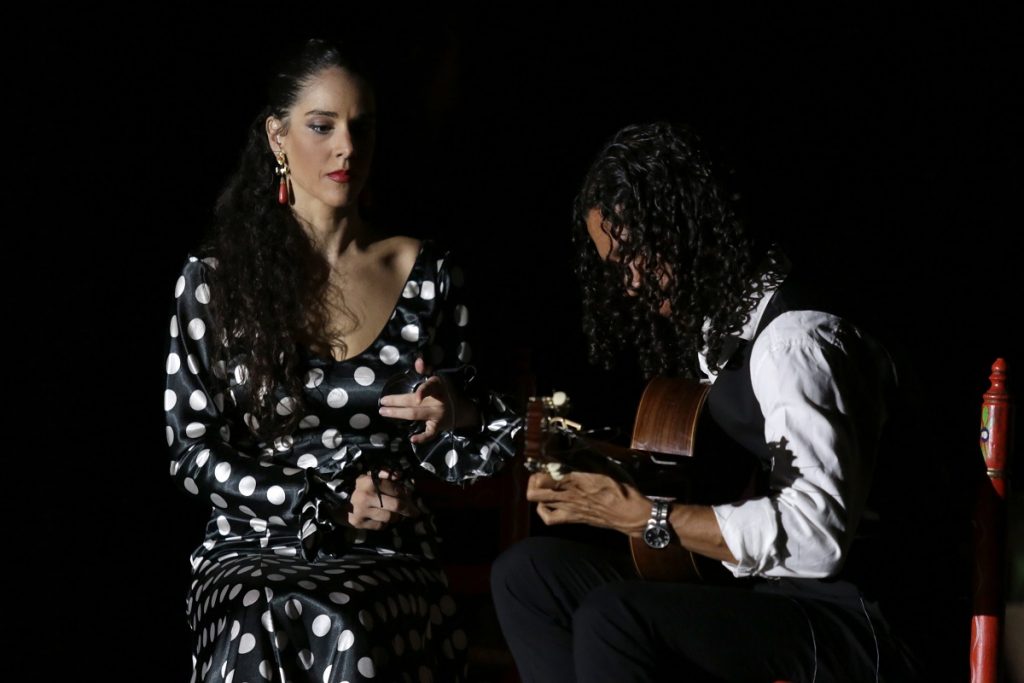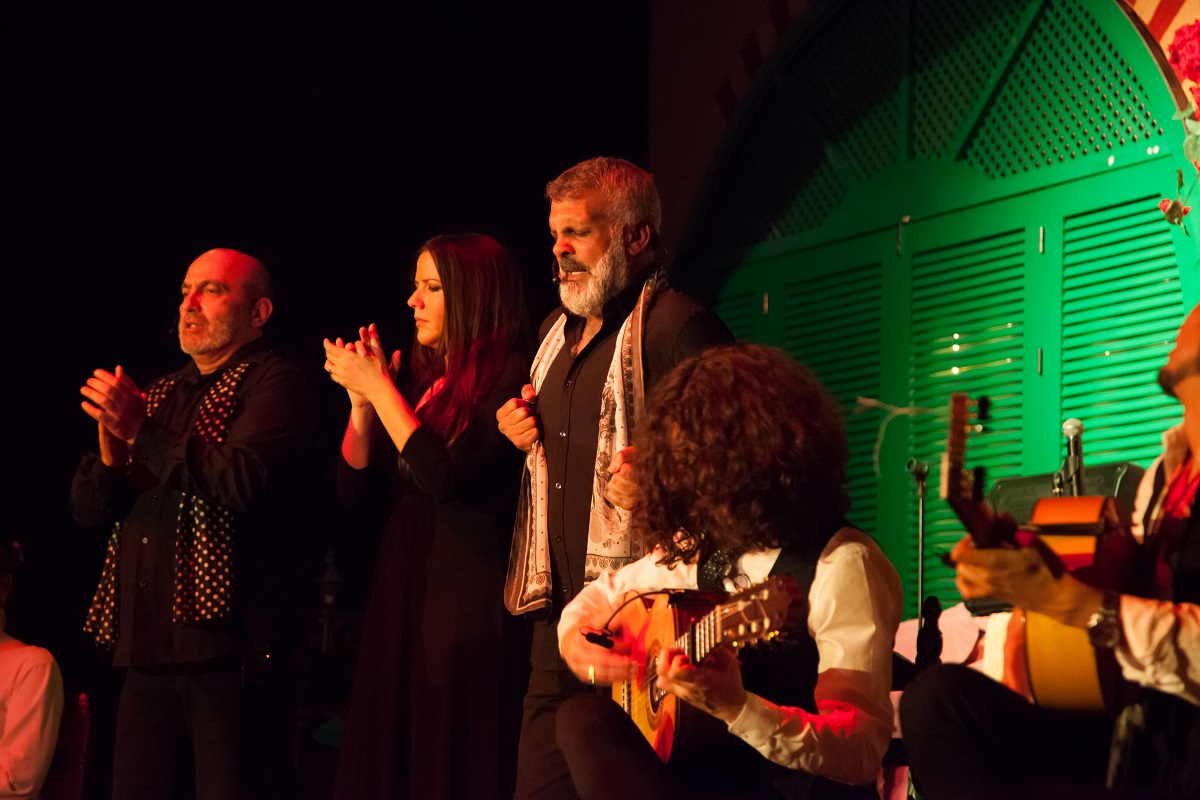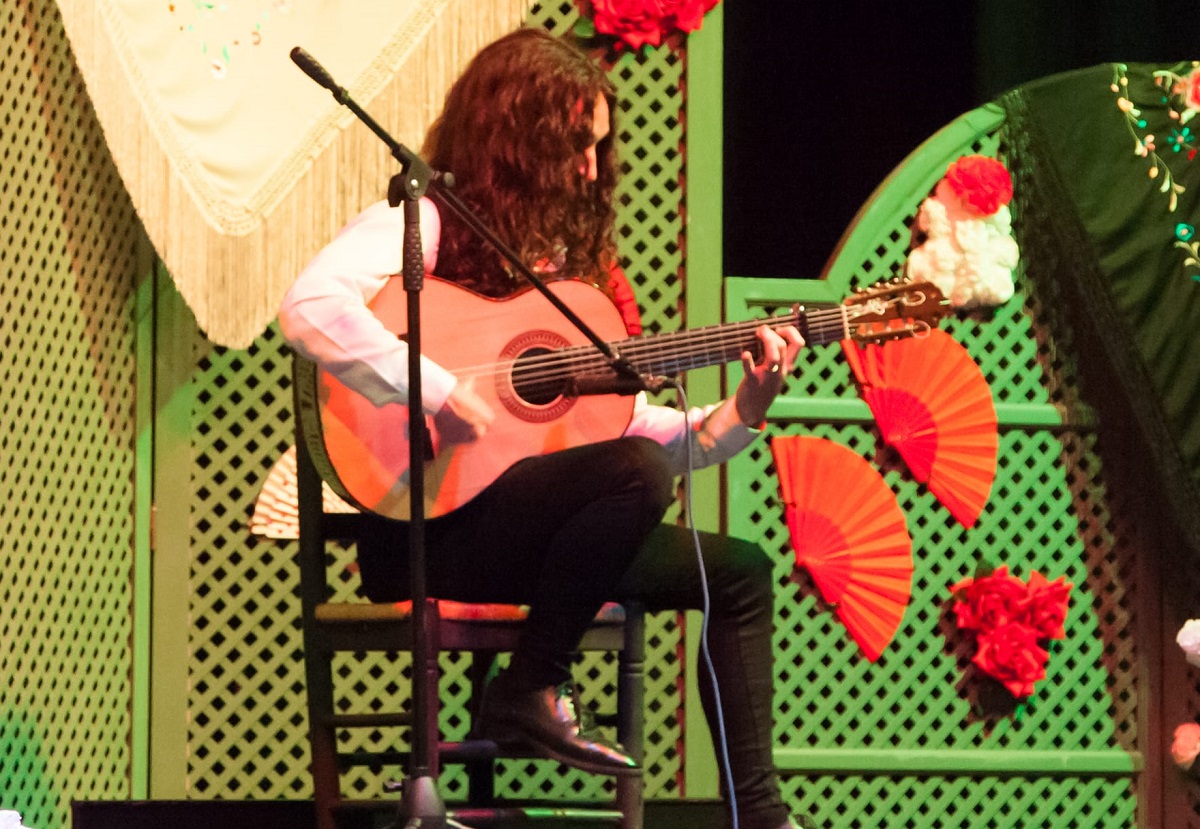
The flamenco guitar is an indispensable element in a tablao. Nowadays it is impossible to imagine a flamenco show without the presence of this instrument, but, although it may seem incredible, this has not always been the case.
The guitar was incorporated into flamenco to accompany the cante (singing). Little by little it has been gaining ground to become a benchmark for this art, thanks to the contribution of many artists who with their mastery have made this instrument even greater.
The flamenco guitar is one of the variants of the Spanish guitar, being the most popular and well-known inside and outside of Spain. The origins of flamenco date back to the 18th century, an art that has influences from various cultures such as Christian, Jewish, Gypsy and Arabic.
This cultural mix is present in the sound of the flamenco guitar, despite the fact that it was not until the 19th century, when thanks to the popularity of flamenco tablaos, the guitar joined the cante that, until then, had dispensed with any musical instrument.
In fact, the singings “a palo seco” are a legacy of that primitive cante that the artist interprets without any accompaniment, the voice being the only support.

Although there are various theories about when the flamenco guitar began to be part of a singing and dancing show, there is a first reference in 1850, by Francisco Rodríguez ‘El Murciano’.
When guitar and flamenco merged, they began to consolidate flamenco art as we know it today. The introduction of the flamenco guitar helped to structure the flamenco styles and regulate the cante patterns, giving them entrances and exits with the melodic accompaniment of the guitar.
The incorporation of it was followed by other instruments such as the flamenco cajon, the flute or the violin, which are fusions more typical of the most current flamenco.
Although at first glance, flamenco and classical guitar seem the same, in reality they are different. Each one has its own characteristics and techniques for playing them. In addition, the music that is interpreted for both styles is also different.
Regarding the main differences between one guitar and another, we highlight the following:
The flamenco guitar is lighter and smaller than the classical one.
Flamenco guitars are usually made of cypress wood, a material that gives brilliance to the sound and adapts very well to the characteristics of this musical genre. The classic ones are usually made with palo de santo and cedar.
Another characteristic that differentiates one from the other is the body, which is narrower in the flamenco guitar so that the sound is lower and does not eclipse the singer’s voice. The harmonic bars are also placed differently.
These small differences make each guitar sound different, each one adapting to the demands and characteristics of its style. In the case of the flamenco guitar, the sound is more percussive, sharp and dry so that it fits perfectly into the accompaniment of the singer without stealing the limelight.

It is an instrument that has evolved over time, an evolution to which artists have contributed a lot, being in the 70s when it reached its maximum splendor thanks to interpreters such as Paco de Lucía, teacher and reference for guitarists, and an artist highly revered by flamenco lovers.
Other interpreters who have contributed to the enhancement of this instrument have been Tomatito, Sabicas, Manolo Sanlúcar, Pepe Habichuela, Gerardo Núñez, Paco Serrano, Vicente Amigo, Paco Peña, Ricardo Miño or Diego Carrasco, knowing that we left many of us in the inkwell other ‘tocaores’ (guitarrists).
Nowadays, in most flamenco shows you can enjoy singing, dancing and guitar, three elements that link in perfect harmony, offering flamenco audiences in its purest and most authentic state.
In the online shows of El Tablao Flamenco El Palacio Andaluz, you will find different proposals to enjoy the magic of flamenco guitar, Andalusian singing and dancing.
© 2023 El Palacio Andaluz. All rights reserved.